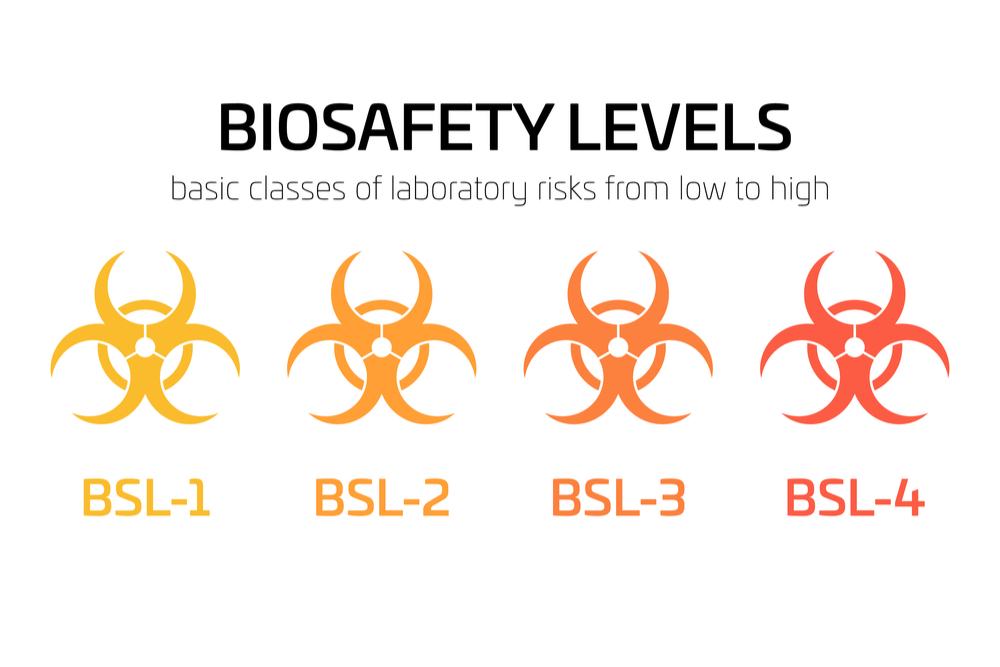In our previous post, we broke down biosafety level (BSL) 1 labs. Biological labs operate under safety ratings, as anyone who works in one of these can attest to. However, what does BSL mean and what are the levels of biosafety?
In biological labs, or bio-labs, workers often deal with dangerous substances. In fact, some of these materials can be fatal. Therefore, biosafety labs have undergone a numerical rating system. Each BSL has a number to indicate how hazardous they are and their precautions. Previously, we discussed biosafety levels 1-4 and the differences between them. However, in this post we’ll discuss biosafety-2, or BSL-2 labs. We’ll explore the fundamentals of working within a BSL-2 lab and the precautions that you need to know.
1. The Basics of BSL-2 Labs
Being the second highest of numerical ratings, obviously BSL-2 labs do not contain very severe hazards. However, there are still specific precautions that must be taken to protect employees.
BSL-2 labs work with agents aligned with human diseases (like pathogenic or infectious organisms) that pose a moderate health hazard. The kinds of agents within a BSL-2 include equine encephalitis viruses and HIV.
BSL-2 labs have the same microbial practices as BSL-1 labs, but also includes enhanced measures due to the potential risk of the agents. Personnel working in BSL-2 labs must take greater care to prevent injuries like cuts and other skin breaks, plus ingestion and mucous membrane exposures.
2. BSL-2 Precautions
In a BSL-2 lab, all of the BSL-1 precautions must be followed. However, there are additional protocols in place to protect employees and prevent contamination. First and foremost, lab workers must have specific training in handling dangerous agents. Scientists with more experience and expertise supervise these employees throughout their training.
Additionally, during work hours, administrators must limit access to the workspace. Only authorized personnel may enter the lab. Also, when sharp instruments are being handled, extreme precautions must be taken. This is for the sake of preventing skin breaks that can lead to ingestion of hazardous materials. BSL-2 labs also have autoclaves, or other decontamination methods for proper disposal of infectious materials.
Furthermore, the lab equipment used in BSL-2 labs must meet certain requirements. Regular lab equipment testing and certification is a must. Additionally, proper lab equipment and decommissioning must be carried out when a unit is being disposed of or replaced.
3. Personal Protective Equipment (PPE)
First and foremost, workers in BSL-2 labs must wear face protection. This includes goggles, masks, face shields or splatter guards. These protect workers from chemical splashes or sprays of infectious materials to the face when microorganisms must be handled outside of a biosafety cabinet.
Naturally, BSL-2 employees must wear gloves, as well. Sometimes, under specific circumstances, wearing two pairs of gloves is appropriate for extra protection. Protective coats, gowns, smocks, or uniforms must be worn. This protective clothing remains in the laboratory before leaving. All protective clothing is disposed of in the workspace, it should never be taken home by personnel.
Conclusion
At SEPS, lab safety is of paramount importance to us. Nowadays, it’s more important than ever. With the recent COVID-19 pandemic, we’re continuing to do our part to ensure every lab is as safe, clean and sanitary as possible. In our next post, we’ll discuss BSL-3 labs and their specific safety regulations.
